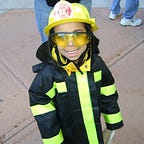Always Time for Safety
Approximately 25 years ago, as a young firefighter, I learned a valuable lesson at a fire scene. The lesson, in short, is this: Actions taken in haste, as a time-saving gesture, may easily have the exact opposite effect. Hasty decisions often dramatically reduce safe operations and lead to increased work effort and bad outcomes.
My Learning Experience
The fire that taught me this lesson occurred in a Class 3 ordinary construction warehouse with standard brick and wood joist construction. The warehouse was a three-story building constructed in either the 1920s or 1930s. It had oil-soaked wood floors, and had once served as a minor equipment manufacturing complex. It was now vacant with windows tightly boarded on the upper levels. Vagrants were known to inhabit the structure from time to time.
The call came in the middle of a sunny summer afternoon. Temperatures were in the 80s to 90s, and a moderate wind was blowing.
Dispatch reported the fire with smoke showing, and by the time we arrived, police were already on scene. (A passerby had notified police who were conducting routine patrols.)
The building was situated equidistant from two fire stations, and pre-plan information required our engine and ladder companies to report to the B side of the building. A second engine company reported to the A side. We arrived shortly before that unit with the battalion chief (BC) and ladder company, as scripted.
A recently promoted lieutenant, who was known to be aggressive, served as my company officer. The culture of the entire department — and that station in particular — dictated that we perform interior operations on virtually all incidents. On this occasion, however, the BC distinctly ordered the lieutenant to stand by with the engine and ladder companies while he drove to the A side to do a further assessment and meet with the arriving engine company and police who had initially made entry. At this point, smoke was observed pushing out of the boarded windows on the top story.
Almost as soon as the BC drove away, I received an order from my lieutenant to pull a dry 2 ½" line, and he and I would team up with the firefighters on the ladder company who were also directed to pull a dry 2 ½" line to make entry. I must admit, I was a bit conflicted because I was fairly new and had clearly heard the BC instruct us to not do this. But at the time, fire command was largely a vague concept, and freelancing was not altogether unusual. So, two large loading dock doors were forced, and we advanced the 2 ½" hoselines down the long, wide hallway, as instructed by our lieutenant.
Upon entry, we could see some smoke and flames about 30 yards ahead. Little heat was felt at the time, so we advanced nearly 20 yards, then charged the hoselines. Suddenly, we saw a wall of fire coming directly at us. We were in a significant flame rollover, and the water streams from the 2 ½" lines were unable to prevent it. Conditions changed so rapidly that we had little time to react. My lieutenant, who only a moment ago was completely shielded in bravery, came diving over me, knocking off my helmet and very nearly my facemask! Honestly, I would have dove, too. But I was simply too inexperienced to know any better. We retreated on our bellies with the others and made it out of the building with fire raging over the top of us. We left our heavy hoselines behind. Shortly after exiting, we tried to drag the lines back out to perform an exterior attack, but had little success.
We then found ourselves committed to a failed initial attack, so we scrambled to set up the ladder and pull lines from it to try to contain the fire, retrieve the equipment and protect the engine that was within the building’s collapse zone. It was all downhill from there. In short order, the wall from the B side of the building failed, the engine was damaged and a great deal of equipment was lost beneath the rubble.
What Must Change
Why bring this up? I had the opportunity to attend a pre-conference workshop session once and imagine my shock and dismay when the presenter asked how many departments represented in the session failed to do a walk-around on a building before committing to an interior fire attack. More than 50 percent of the attendees acknowledged that they did not. The rationale given most often was that the company would be perceived as timid if they somehow delayed entry for this. That is unacceptable!
The bottom line: We need to work toward changing this mindset. Not only is it potentially fatal, but clearly it’s also far less efficient. Have you ever tried to undo bad initial tactics? It’s not easy. Breaking down improperly placed hoselines and repositioning misplaced apparatus causes delays and, more importantly, puts firefighters at risk! Take the time to do a proper size-up. Consider construction type, occupancy, time of day, weather conditions, exposures, water supply, building size, life hazards and available resources, to name a few, before committing to tactical operations. Take the time to do things right the first time around, and you’ll save time by not having to correct anything. The time you save and the life you save (your own) are well worth it.
